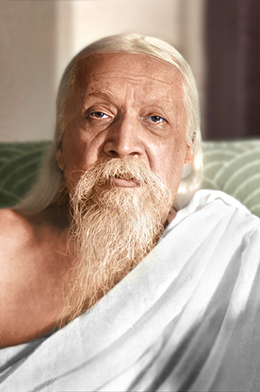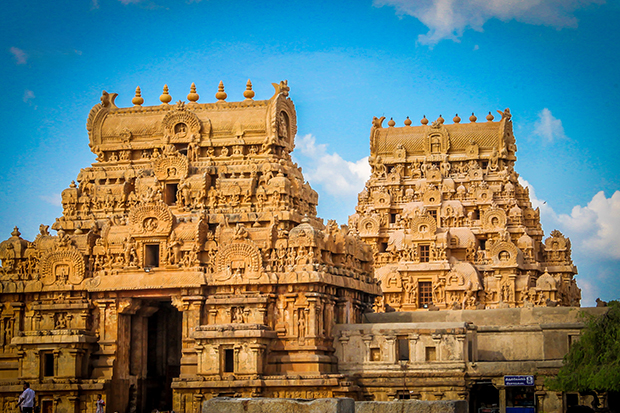Life-force
Pursuit of Beauty
Abstract
The sense of beauty has a healing touch, refines temperament and is a powerful motivator for inner growth. It also leads to the realm of creativity situated at the summit of consciousness.
The pursuit of beauty is an essential part of personal growth. Thus, perfection becomes linked with beauty. Moreover, beauty has a special affinity for the physical. The Mother considered that any loss of the sense of beauty, rather than poverty, could be more responsible for the downfall of a nation.
The sense of beauty has a healing touch, as it is a powerful motivator for inner growth. The vital carries the turbulence of the passions and can adulterate and vulgarise beauty, but the physical has no such problem and can manifest beauty in its pristine purity. It might be argued that everyone cannot cultivate beauty as that requires an aptitude, but The Mother explained that the basic programme for a discipline of beauty should be, “…. to build a body that is beautiful in form, harmonious in posture, supple and agile in its movements, powerful in its activities and robust in its health and organic functioning (1).”
It is important to note that mysticism considers the soul to have an affinity with the physical and children radiate the beauty of soul-innocence, which as they grow up, gets eclipsed by the turbidity of vital passions and the doubts of the reasoning mind. It is the reason why the Bible declares that children have the inherent right to enter the kingdom of God, implying that a spiritual sojourn needs the beauty of a child-like simplicity.
One interesting fact is that material needs decrease with spiritual growth and hence there might be a loss of interest in aesthetics and the pursuit of beauty may seem to be an unnecessary exercise. The Mother pointed out that a rejection of aesthetic needs is a regression to a primitive life, that is not necessarily right and does not help in the growth and efflorescence of a many-sided, variegated consciousness. The loss in material interests is not a sign of spirituality. It happens not because one has an ascetic pull but because, “…. the focus of attention and concentration of the being moves to a different domain… (2).”
In fact, a refined and sensitive consciousness at a certain degree of development could spontaneously and naturally select its own parameter of beauty that would enhance the pursuit of a divine life. It is wrong to believe that aesthetics serve only our passions and sensations. Beauty is an attribute of the Supreme and aesthetics can be pursued as a gateway to the Divine. As Sri Aurobindo put it, “Cultivation of the sense of beauty refines the temperament. A refined temperament is much more easy to purify than an unrefined one…. the development of the sense of beauty is as much a part of perfection as anything else. Not only that; if a man has not developed the sense of beauty he would miss the path of approach to the Supreme which is through beauty (3).”
The Realm of Creativity
Refinement of sensations and cultivation of beauty lead to the realm of creativity. The true realm of creativity is situated, “…. at the summit of human consciousness, on the borderline between what Sri Aurobindo calls the lower and higher hemispheres (4).” It is a world of creation with several zones which the Mother has described exhaustively.
The first zone is the zone of forms that are expressed as paintings, sculptures and architectures. The second zone is the musical zone with great waves of soundless music that exist per se, without striking any surface and inspires great composers. The third zone is the zone of thoughts, organised thoughts for plays and books, abstractions for philosophies. The fourth zone is one of forces that appear as coloured lights without forms. These forces can be combined for terrestrial action. It is a zone of action independent of form, sound and thought and can be used for particular events (5).
“Thus we have form, expressed in painting, sculpture or architecture; sound, expressed in musical themes; and thought, expressed in books, plays, novels, or even in philosophical and other kinds of intellectual theories (that’s where you can send out ideas that will affect the whole world, because they influence receptive brains in any land, and are expressed by corresponding thoughts in the appropriate language). And above this zone, free of form, sound and thought, is the play of forces appearing as coloured lights. And when you go there and have the power, you can combine those forces so that they eventually materialise as creations on earth (it takes some time, it’s rarely immediate) (6).”
References
1. The Mother. The Collected Works of the Mother, Volume 12. 2nd ed. Pondicherry: Sri Aurobindo Ashram Trust; 1999, p. 50.
2. The Mother. Mother’s Agenda, Volume 11. Paris: Institut de Recherches Évolutives; [English Transl.] 1981, p. 117.
3. (Recorded by) Purani AB. Evening Talks with Sri Aurobindo. 2nd Impression. Pondicherry: Sri Aurobindo Ashram Trust; 1995, p. 455.
4. The Mother. Mother’s Agenda, Volume 3; [English transl.] 1979, p. 387.
5. Ibid., pp. 388-89.
6. Ibid., pp. 389-90.
Dr. Soumitra Basu, a practising psychiatrist and member of SAIIIHR, is the Director of a school of psychology, Integral Yoga Psychology. He is also one of the editors of NAMAH.
Share with us (Comments,contributions,opinions)
When reproducing this feature, please credit NAMAH,and give the byline. Please send us cuttings.



